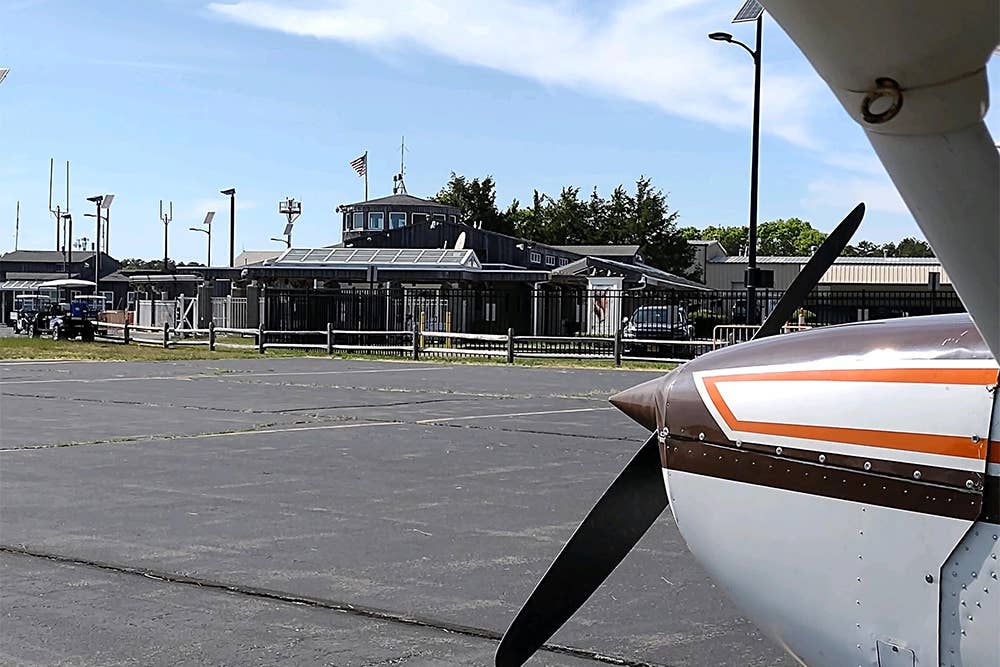Trying to See Both Sides in East Hampton
While the town and other interest groups battle in court, others push for the permanent shutdown of East Hampton Airport.

East Hampton Airport is is inviting, with a friendly, easygoing control tower staff, pleasant line personnel, and a bright, airy FBO. [Photo: Jonathan Welsh]
I was surprised recently when a pilot friend who used to own a house near the East Hampton Airport (KHTO) on New York’s Long Island mentioned how annoying the buzz of air traffic in the area could be, particularly low-flying helicopters.
Soon, however, I began thinking about how many times I cursed under my breath as loud choppers passed overhead when I worked in downtown Manhattan. I have a particular dislike for models with ducted-fan-style tail rotors, sometimes called fenestrons, that make a shrieking sound which, over the city’s din, adds insult to injury.
I wondered if that noise is driving the movement to close East Hampton Airport. To find out, I emailed Say NO to KHTO, a volunteer group founded in 2016 and based in Sag Harbor, New York, a village that occupies part of East Hampton and neighboring Southampton.
The group has yet to respond, but information from its website, the Town of East Hampton, and other other sources reveals a fairly clear picture of the parties battling over the airport. With numerous sides to the argument, could the combatants eventually find common ground—perhaps enough to keep the airport open?
FLYING has reported extensively on the town’s plan to change the public airport into a private-use facility, limiting traffic and noise in part by requiring pilots to obtain permission before landing. However, it seems safe to say the endgame of groups like Say NO, the Coalition to Transform East Hampton Airport, the Quiet Skies Coalition, and others is to permanently close the airport.
A peek at the Coalition to Transform East Hampton Airport website leaves little doubt.
“On September 26, 2021, the five members of the East Hampton Town Board gained the ability to stop the substantial noise and environmental pollution caused by KHTO as we know it today,” the group says, referring to the expiration date of FAA grant assurances that imposed certain obligations on the town for maintaining the airport.
The statement continues, “Serving less than 1 percent of local residents and visitors alike, providing little to no economic benefit to the Town, and contributing to significant air, water, ground and noise pollution, it’s a no-brainer: it is time to close the East Hampton Airport.”
I am sure people who scrape together funds to rent a Cessna 172 for a couple of hours and fly to East Hampton for lunch, to visit friends, or just spend a few hours on the beach, would resent the one-percenter reference. But according to the perennial boilerplate case for closing airports, pilots are wealthy, wasteful, selfish outsiders who bring nothing worthwhile to the community. It’s an old label.
But many East Hampton residents may also have reason to feel aggrieved. A number of people have told me that aircraft often ignore prescribed routes for approaching the airport, flying lower and closer to homes than necessary. They describe helicopters that appear low enough to “clip the trees.” While adhering to these routes is voluntary, doing so could begin to ease the tension between pilots and the wider community.
It wasn’t always this bad. According to the Say NO group, the airport, which opened in the 1930s, “once was a good neighbor.” But general expansion and increased jet and helicopter traffic beginning in the 1970s eventually drove a wedge between the airport and adjacent residential areas. Today, the battle over the airport’s future has a distinct tone of “us versus them.”
Competing interest groups have been hashing out the airport’s status in court since last month. Meanwhile, the airport has begun operating under a new identifier (KJPX) but operations have changed little, at least for light piston aircraft. As the legal process continues there could be opportunities for compromise that could keep the airport open and maintain public access.
A number of residents have said they do not want to close the airport, just downsize its operations to better reflect its surroundings. Essentially, they would like to turn the clock back 50 or 60 years and have the gentle thrum of piston engines replace the turbine whine of jets and helicopters. Because of this sentiment and the jobs, commerce, and profits the airport generates, it is difficult to picture the place simply closing.

Subscribe to Our Newsletter
Get the latest FLYING stories delivered directly to your inbox






